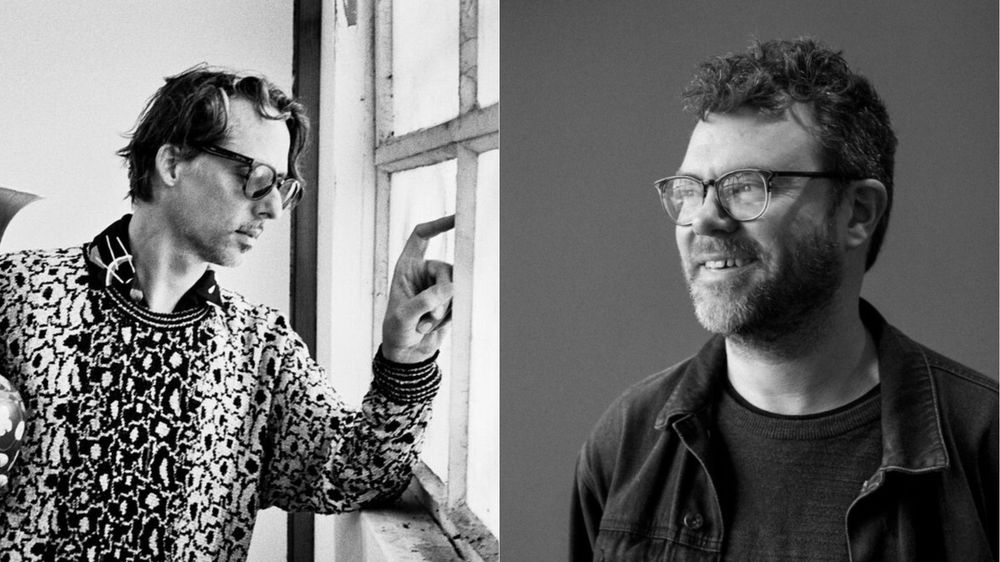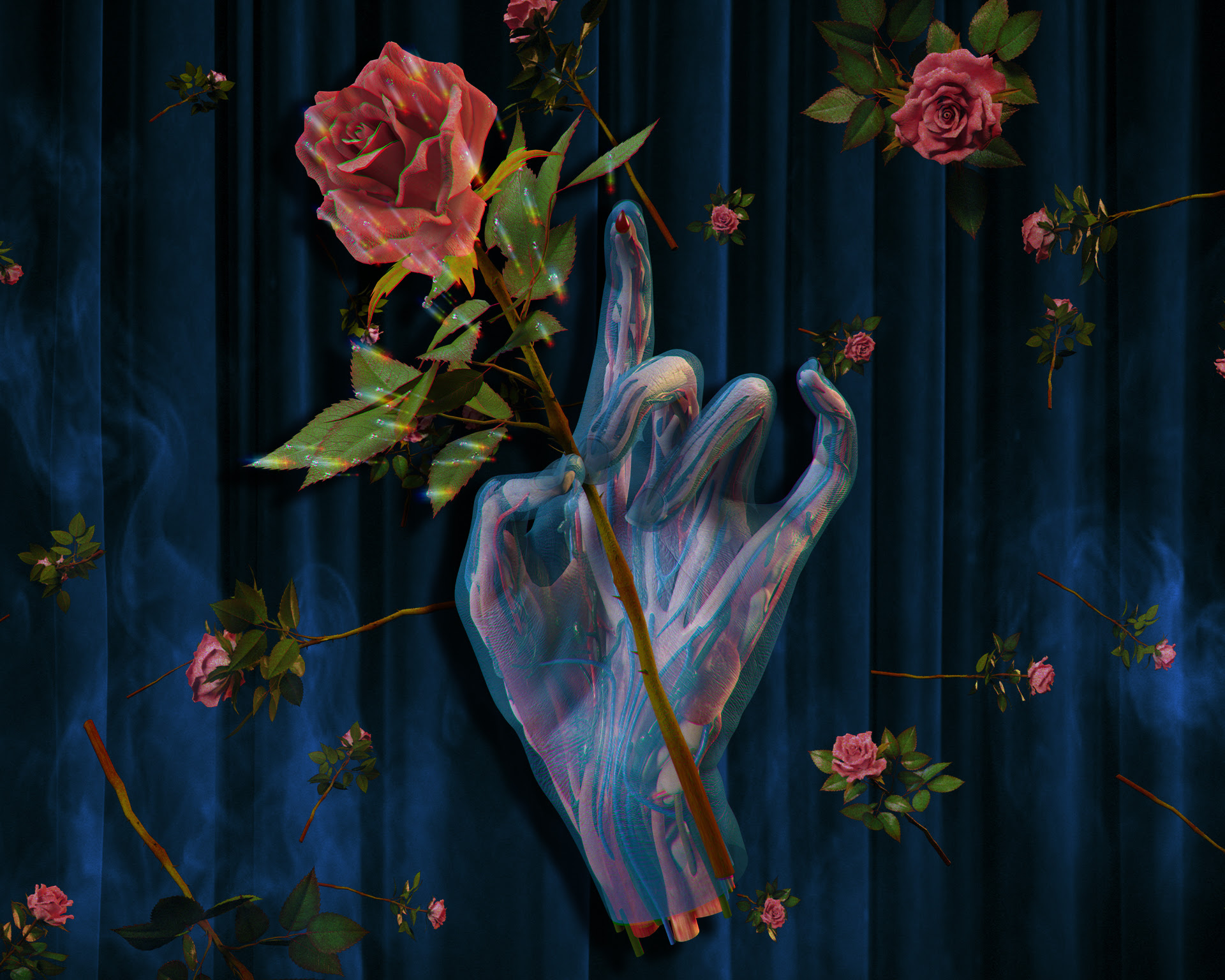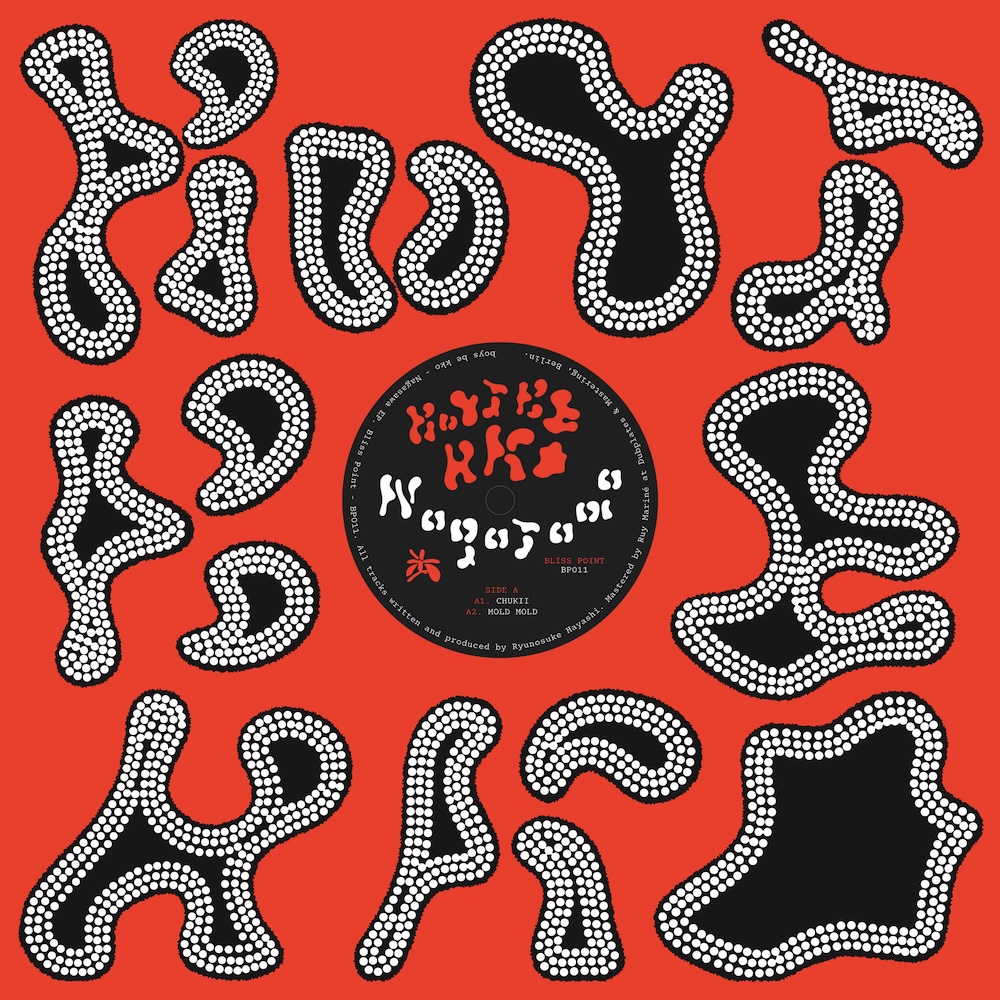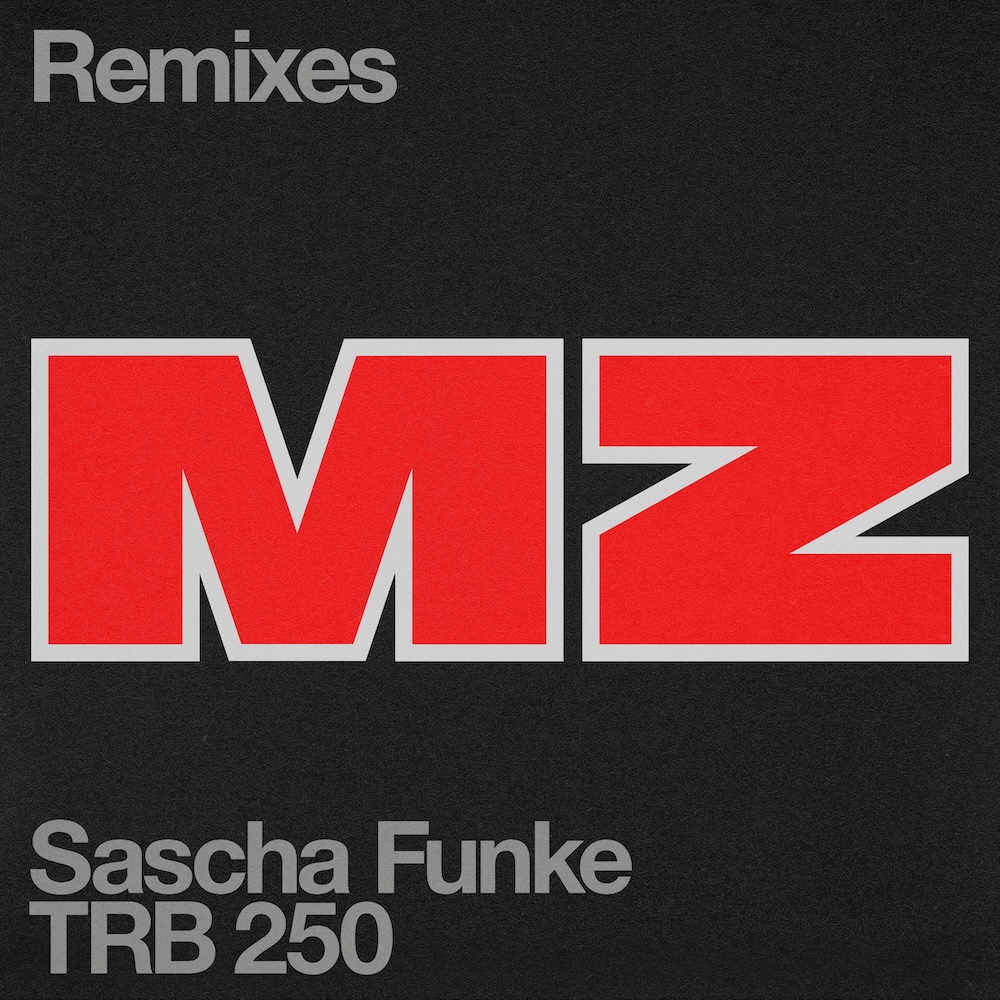Artist To Artist: E Ruscha V & Shy Layers

Beats In Space have set the bar incredibly high as of late – it is know mistake that we have featured them so regularly in recent times. It's hard not to given the scale of output and the consistent quality the imprint has become accustomed to. Two of the most intriguing new prospects to appear on the record label include E Ruscha V, who has previously released under the guise of Secret Circuit, and Shy Layers, a multimedia artist and producer who has previously appeared on Growing Bin Records. The two have very distinct production styles and their music is dissimilar in many ways… However, that is not to say that they have little in common – far from it.
We invited the pair to talk below as they explain their relationship with sound, sculpture and electronics.
See below:
(ER = Ed Ruscha V, JD = Shy Layers)
JD: I guess the obvious question about working in multiple media is about process – how does your headspace differ when creating music vs art? Are there any interchangeable aspects in those processes?
ER: I see a kinship in certain areas of the visuals and the music, so this is really nice to be able to have this discussion! For me it really happens in a natural way, and it feels nice to always have the other artistic avenue in waiting. If there's something I have to finish in one area I put much of my focus towards that and just bounce back and forth. Other times I actually work on a painting while listening to loops or parts and blur it all together. It can be frustrating sometimes when you feel like you could be advancing one or the other further but I really can't see it happening any other way for me. The pull is too strong from both sides. Either way, both have to be nurtured to some extent or they start to have a strange distance that's kind of an unpleasant feeling. As far as mixing both together, I have done art pieces in the past with sound but I've always felt a bit on the fence about it. Music is such an all encompassing thing for me. I always feel strange about some music running in an empty gallery while the gallery worker is responding to emails for a month with earplugs on.
ER: As this is the perfect kickoff question, I must know how does it work for you? Do you find one pulling more than the other? Is it a healthy balance? Do the outcomes exist in the same space at the end?
JD: Yeah, I do move back and forth between visual stuff and music in a similar fashion, although sometimes I do need to focus intensely on one or the other. Moving between media has another advantage – you gain perspective by taking a break to reflect. I can’t tell you how many times I’ve made something and that night thought to myself “that’s it – I’ve really nailed it” only to wake up the next day wondering if I’ve gone insane. I guess for me one place that they come together is with videos. I hadn’t tried to make a “music video” until recently and found it quite enjoyable to very literally join the two worlds together. It always blows my mind how images can change your perception of a sound, and vice versa – like a weird feedback loop. Same thing goes for art, just in terms of contextual interference. Like, how does an artwork change when I hang it low vs. high, or what happens when it’s next to a large swath of color, etc. My recent wall-reliefs are trying to do this in some way.
JD: This reminds me, I really love the recent circular canvases you've been working on. When I saw how they were arranged on the wall – in a group, cloud-like – it made me think about how sequencing individual works can be such a delicate act, and can affect the perception of the whole thing. I suppose the same thing can be said for tracks on an album. What are some considerations when making these types of decisions?
ER: In a way, I see the installation of those circular paintings as a kind of "info grab" or indeed a cloud, as if there was some kind of futuristic shopping environment the viewer is experiencing. The paintings in themselves to me are like reflections of ideas or ideas that aren't quite formulated. As if they are on their way to or from something concrete. I wanted them to have a foot in ideas of design and utilitarian product but also to reference forms of art history. I wanted them to represent a landscape or false world almost like an advertisement. As far as sequencing or arrangement of an art show goes, sometimes I feel like the first thought is the best thought. Take them out of the box and put them out and things start speaking to each other. As soon as you mess with it too much, a bit of magic is wiped away. This totally depends on the show of course.
To me sequencing or installing art is a bit different than music because I always tend to think of music in linear movement through time, even though that's a less popular outlook today due to streaming etc., I still think of a body of music as an LP record which travels from an exact point and takes turns along the way to its completion. Each song on a record carries an emotional echo of the preceding song so it can be very painstaking to sequence a record for me. I do feel like the younger generation definitely will be missing out on certain things, for example: if they ever get into Black Sabbath they may just skip over something like "Planet Caravan" or "Solitude" because they may sound weak on first listen. All in all I think that's just me and my music training and listening history, and I'm not saying it's better than another way. There're so many interesting things people are doing with music now and there is no right or wrong way.
JD: Yeah, I am also more of an “album” guy. That could just be my age, but I think I’ve always been that way. It does play into the linear nature of music. And yes – sequencing a record is both thrilling and nerve-wracking. I get really into it but it can be an anxiety-inducing task. I really need to know the flow of an album, its history, what it’s trying to “be”. I’m kind of a sucker for album folklore – like those videos where Steely Dan is behind the mixing board explaining the recording of “Aja”. It’ll be interesting to see where streaming takes all of this. My utopian fantasy is that it radically alters ideas surrounding curation.

ER: I can really see some similar jump off points in our art styles as well as music. It brings up an interesting question. As for me, I've gone to thrift stores and junk shops since I was a kid and would always be wearing fashions that were dubious, to say the least. As time would go on, the styles would make their way back into fashion. Music is like that as well. For a good while the production style of the 1980s was considered the downfall of recorded sound. Now there is a reappraisal of that sound and those instruments in electronic as well as popular music. Miles Davis once said something like: You have to go forward but always carry the past with you. Even some of his later records are starting to sound decent! What are your thoughts on the idea of mining the past for inspiration?
JD: This is an interesting question. For me it’s not really a conscious decision about whether to make something sound retro or not. So much of what I listen to is older stuff, so that’s what comes out. You are what you eat, I guess. It’s a bit of a bummer that certain sounds get associated with nostalgia – a DX7, for example. So many people used these on recordings that FM synthesis will sound 80’s for a while. But those sounds were exciting then for a reason, just as they are now. I see the trends come and go in art as well. Abstraction is in, then it’s back to representational art, then figure becomes popular again. Right now I sense a real 90’s vibe in the art world. I try not to get hung up on what’s cool at any given moment, and just try to hold myself accountable to my own standards. What’s radical to me is playing with interesting song structures, and using the different referential qualities of sounds to create new, weird, combinations.
JD: In art and in music, my process is mostly solitary these days. I was in bands for many years and I do miss collaborating with other musicians – it’s a treat whenever I get to. The Woo remix of "Who Are You" is so good! How often do you collaborate in music? Do you collaborate in visual art as well?
ER: I always try and collaborate with people. It's a very important part of music making. It's a dialogue and things get very interesting when that unfolds in music. A band like Can would be a great example. I was collaborating with Diego Herrera (Suzanne Kraft) quite a bit before he moved to Amsterdam and I've been working on a lot of music with Scott Gilmore lately. Making music alone is great in a lot of ways but it's also exciting to have another mind to bounce things off of. Both have different sets of difficulties and advantages. Remixes are another form of collaboration in my mind. You've got these parts that someone else did and you get to reconstruct, take apart and add things to. That's what Woo did with that track. I think it's officially the first remix they have done, or at least that's what they told me! It's amazing to me to hear how they managed to get so far inside the music and to hear a whole new piece of music come out of it. It's like a dream come true. As far as collaborating on art, I find it a bit different due to the nature of the medium. In the past, I collaborated with other artists quite a bit in art school making environments and happenings. Lately I've been working with The Exploded Generation Group, a kind of growing crew of artists under the Perks and Mini umbrella. We did some shows in various galleries and made some books, one of which is like a thick phone book: The white and yellow pages. It includes a huge collection of egg related images we've all amassed. If anyone needs a giant guide book to the outer reaches of the egg's possibilities, this is it.
JD: Yeah, it’s interesting how collaboration is so much more accepted in music vs art. I assume it’s something about the long history of musical accompaniment, vs the long history of painting which is a more solitary act. I’m glad you mentioned Can – probably one of the most important bands in my musical development. The kind of dialogue they achieved is something I’ve always longed to figure out. But at some point I realized that they were also great editors – there’s an aspect of post-production on their classic records that just works. Similarly, there's a looseness on your recent LP that feels improvised but also poised and composed. How do you maintain that kind of playfulness when tracking solo?

ER: I find when I'm making music the stuff I enjoy listening back to the most are the things that happened really naturally so I always try and explore in the studio and search for that feeling. I do something new for myself and do it fairly quickly and if there's a core idea there that grabs me and makes me want to finish it later, I will. The looseness is something I've always been drawn to whether it's private press records or demo recordings. It's also where there is some humanity lingering and I think the brain craves that in a way. I just also happen to be a huge fan of machine music so I try and fuse it together. I definitely was going after a kind of natural music even though at its core, it's electronic music.
ER: How do you approach music making? Does it start as an improvisation of sorts that's turned into something or do you compose the melodies ahead and then record them? I hear a lot of guitar in your music. Electronic instruments and machines can evoke a certain otherworldly quality. What's the significance and symbolism of the guitar for you?
JD: Well, most of them do start as improvisations, usually on my small modular synth. This is just to get the ball rolling, and to get to places I couldn’t otherwise get to. The trick is not to let it get built up too densely, too quickly. So a lot of times I’ll have to step back, remove things, reimagine things. I think my years as a video editor has helped me be a bit dispassionate about what stays and what gets cut, in a good way.
The guitar for me is simply an instrument that I’m able to play comfortably, more so than keys or drums. When you’ve played an instrument for a long time (for me it’s been 30 years) you can improvise, generate ideas quickly, be expressive, etc. I feel like it adds a human quality on certain songs, and it’s a big part of my live show. I normally don’t think about it in terms of its symbolism, but when you hear a guitar it calls things, histories, musical references, to mind. To me, playing with and complicating these types of associations are what it’s all about.
Visit the Beats In Space Bandcamp HERE.


















Must Reads
David Holmes – Humanity As An Act Of Resistance in three chapters
As a nation, the Irish have always had a profound relationship with the people of Palestine
Rotterdam – A City which Bounces Back
The Dutch city is in a state of constant revival
Going Remote.
Home swapping as a lifestyle choice
Trending track
Vels d’Èter
Glass Isle
Shop NowDreaming
Timothy Clerkin
Shop Now